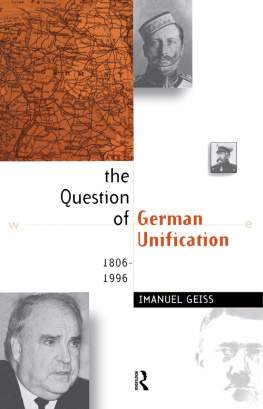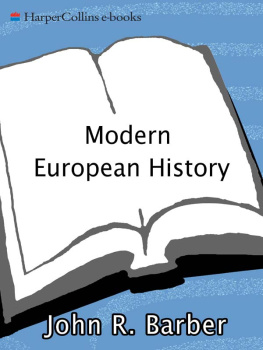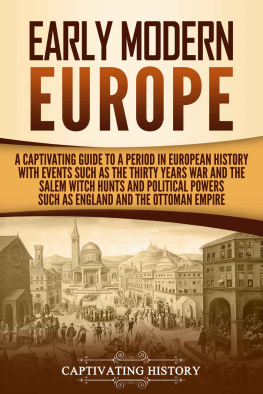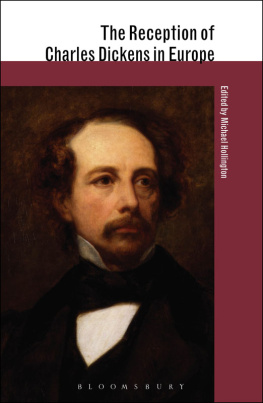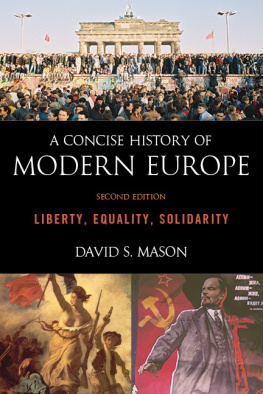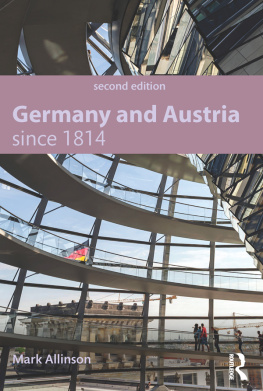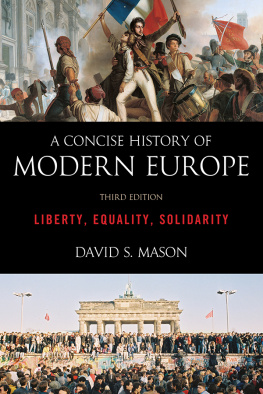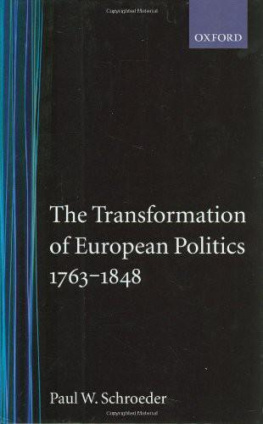
To the memory of
my distinguished uncle
Late Beldona Bhima Rao

B V RAO

STERLING PUBLISHERS PRIVATE LIMITED
Regd. Office: A-59, Okhla Industrial Area, Phase-II,
New Delhi-110020. Cin: U22110PB1964PTC002569
Tel: 26387070, 26386209; Fax: 91-11-26383788
E-mail:
www.sterlingpublishers.com
History of Modern Europe (AD 1789-2013)
2014, B V Rao
ISBN 978 81 207 9276 0
First Edition 1991
Second Edition 1993
Third Revised Edition 2006
Fourth Revised and Enlarged Edition 2011
Fifth Revised and Enlarged Edition 2014
All rights are reserved. No part of this publication may be reproduced, stored in a retrieval system or transmitted, in any form or by any means, mechanical, photocopying, recording or otherwise, without prior written permission of the original publisher.
P rof BVRao has written History of Modern Europe with a specific purpose, mainly to meet the requirements of the undergraduate students studying history in the universities. The period covered in this book is taught practically in every university. It begins with the revolutionary period of European history and ends with the period of post-war recovery of Europe. Prof Rao has briefly discussed most of the focal points of the period under review in simple and lucid language, which is easily understood by the students of this subject. One of the novel features of this book is the list of additional readings suggested by the author at the end of each chapter. This will certainly help the inquisitive students to undertake in-depth studies of the topics of their choice. It is quite obvious from the contents of this book that Prof Rao has taken note of major recent publications on European history, and has made the treatment of his subject quite comprehensive. The maps of Europe from 1789 to the post-World War II period included in this book are very useful for understanding the subject.
I am sure that both the teachers and students would welcome this addition to the existing literature on European History.
A.R. Kulkarni
T he shaping of modern Europe is a historical phenomenon. The forces which brought it about need careful study. The course of events which took place in Europe in the nineteenth and the first half of the twentieth century had its repercussions in Afro-Asian countries, most of which were under colonial rule. Therefore a student of modern history would do well to study this subject.
Although the treatment of the subject in this book may not be very exhaustive, nevertheless an undergraduate student would find it instructive and useful while preparing for the examinations. To enable the students to have a better understanding and grip over the subject I have added some attractive features. I have covered the whole subject (from 17891975) by dividing it into thirty convenient units or chapters. Each chapter contains a well thought out explanation of the topic in an interesting, simple and lucid manner. At the end of each chapter I have provided a useful bibliography (Suggested Readings). To an inquiring mind, this will be most gratifying. I have taken pains to include a dozen excellent maps, all drawn to scale, to widen the perception of our students. I am sure that even students who are appearing for competitive examinations would find my book very useful.
I am grateful to Prof F R Mustafa and Sri Jagtap, both working in the Geography Department of Shivaji University, for preparing excellent maps to be included in this book. I am highly obliged to Prof A R Kulkarni (formerly Chairman of Indian Council of Historical Research, New Delhi) Head of the Department of History, University of Poona, for writing an encouraging foreword to this book. I am also obliged to my wife, Rakma, for rendering secretarial assistance.
B.V. Rao
T he book needed revision as few chapters required more information, some needed to be updated till 2013, and a few others better treatment. Chapters on The French Revolution of 1789 (chapter 2) and Rise of Napoleon Bonaparte (chapter 3) now contain more information, and the chapters on The European Union (chapter 32) and Post Cold War Era: The Dawning of New Europe (chapter 33) include events up to 2013. There is more information on the Russian Revolution of 1905 (chapter 20). Chapter on Europe Since the Seventies (chapter 31) has received better treatment.
Thus, this revision makes the book up-to-date and comprehensive.
Bengaluru
14/8/2014 | B.V. Rao
|
Contents
Maps
I n the chapter on Renaissance it has been emphasised that in the realm of science great progress was achieved due to the discoveries and inventions. A giant among the scientists was Newton whose law of gravitation marked the closing of one epoch in the history of human thought and the beginning of another. It was proved that the universe was based on some order and that celestial phenomena occur at regular intervals. Even clocks are set to time based on the precise motion of celestial bodies. The scientific revolutions of the sixteenth and seventeenth centuries had great impact on peoples minds. It dispelled religious superstitions and introduced secular thoughts.
One of the important things in society which came to be seriously affected was traditional Christianity. Protestant Reformation followed by Catholic Counter-Reformation, which was in turn followed by religious wars in Europe, all led to the evolution of natural religion. The natural laws of the universe came to be applied to religion also. It was then that a conflict arose between those who believed in traditional Christianity and the supporters of natural religion. One of the great supporters of natural religion was Baruch Spinoza who said God and universe are one and the same. But the Jews and Christians attacked him for expressing atheistic views. Thus he became the most misunderstood man during the seventeenth century.
Apart from Baruch Spinoza, the other person to make an attempt to reconcile religion with science was Leibniz (1646-1716). He rejected Spinozas theory and said that substance was the ultimate reality, and it can be perceived only as a force. The universe is made up of many centres of force, that is, monads (or atoms of nature). Leibniz tried to prove the existence of God in terms of scientific formula. He tried to throw the light of reason on old theological concepts.
A group of rationalists known as Deists came into prominence. They rejected traditional Christianity of mysticism, prayers and rituals. The only thing they liked in Christianity was the ethical teachings of Christ. They believed that God was an impersonal force and He created this universe. Immutable laws operate in this universe. What He expects from people on earth is ethical conduct and human perfection based on reason. One of those who belonged to the Deist group was Voltaire, the famous French philosopher who attacked Christianity for all its absurdities. Diderot also ridiculed the Christian doctrines. Rousseau belonged to the Deist group but he was not so vehement in his attacks on Christianity as others were. He proposed the establishment of a civil religion. With the support of great rational thinkers like Immanuel Kant, Reimarus (both German), Tom Paine, Jefferson, John Adams and Benjamin Franklin, Deism became something like a revolutionary movement and threatened orthodox Christianity. Thomas Paine (1737-1809), whose influence was felt both in the American and French Revolutions, became the typical representative of the Age of Enlightenment.
Next page

